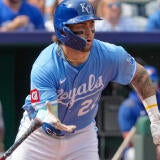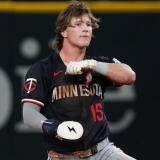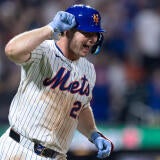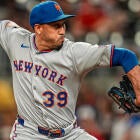Fantasy Baseball: What's wrong with Wander Franco and the rest of the disappointing rookies?
Top prospects haven't been all they're cracked up to be this season
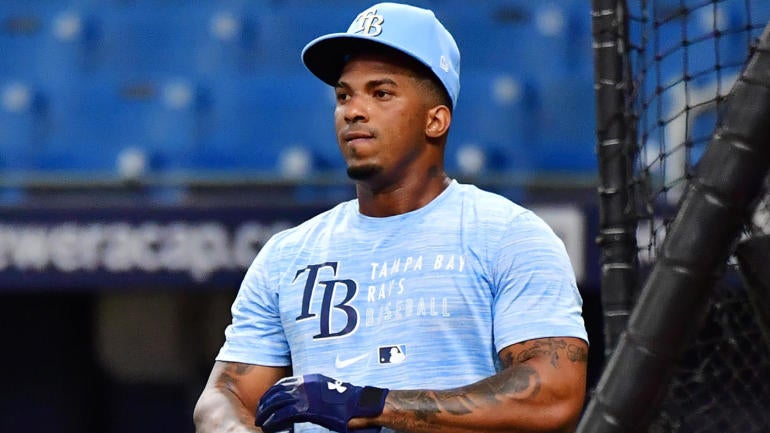
Okay, maybe it was unfair to expect Jarred Kelenic to be a can't-miss Fantasy baseball contributor. After all, he had played just seven games above High-A when he got the call and hadn't played in a real game that mattered since 2019 before that. Maybe expectations were too high.
Well, expectations were even higher for Wander Franco, whose combination of bat control and plate discipline was supposed to make the transition to the majors easier than for most -- after all, in 39 games at Triple-A this season, the 20-year-old had just an 11.9% strikeout rate. Sure, it was a small sample, but for a guy with more walks than strikeouts as a professional, it was a pretty dang good sign of his readiness.
And yet, while he has struck out just five times in 31 plate appearances, Franco hasn't really fared much better than Kelenic did before his demotion, going 4 for 26 in his first seven games, including just two hits since his debut. It's a tiny sample size, but Fantasy players are already starting to express some concern that Franco will be just the latest big-name prospect to fizzle out upon making their debut. One Fantasy Baseball Today listener put his concerns plainly in a recent email:
"Why does Wander Franco suddenly look exactly like Jarred Kelenic?"
I'm an optimistic guy, and I think Franco will be fine moving forward, more or less. But it's not just about those two players: Top prospects just haven't been living up to expectations this season. Andrew Vaughn, Alex Kiriloff, Nick Madrigal, Dylan Carlson, Ha-seong Kim, Brendan Rodgers, Brendan Rodgers … it's been a tough go for those hitters.
German Marquez nearly threw a no-hitter! Should you be looking to buy or sell him in Fantasy? After four solid starts, should you add Joe Ross and drop somebody like Kenta Maeda or Rich Hill? Which hitters should you target that have strong second half numbers for their careers? Also, Shohei Ohtani and Kyle Schwarber won't stop raking! Check it all out on FBT in 5 and subscribe here.
Things haven't been quite as rough for the rookie pitchers, with top prospects Casey Mize and Ian Anderson performing well, with Trevor Rogers also emerging as one of the best pitchers of the first half. But still, hyped call-ups like Alek Manoah and Logan Gilbert have been pretty disappointing. In fact, the best rookie hitters and pitchers have been relatively unheralded guys like Rogers and Adolis Garcia.
But this isn't just about individuals. In an article in May, I showed how rookie hitters were performing worse than they have at any point over the last 20 seasons, and that's largely been true for pitchers, too. Rookie starters have a 4.80 ERA this season, compared to a league average of 4.14. Relative to the league, that's the third-worst mark since 2002 -- rookie starters have a 117 ERA-, compared to 118 in 2008 and an ungodly 129 in 2004. But this isn't some kind of long-term trend for pitchers. 2020 saw rookie starters post a 104 ERA-, the best over the last 20 years.
On the hitter side, things remain pretty bleak, too. Collectively, rookies are hitting just .216/.288/.360 this season with a 28.1% strikeout rate. Relative to league average, that's the second-worst performance by rookies since 2002 -- with 2002 being the worst, with a 78 wRC+, as opposed to a 79 this season.
With all that being said, I don't think we can just conclude that this year's rookie crop is especially lacking in talent. I think this is about circumstances as much as anything -- no minor-league games in 2020 and the season starting in May instead of April means everyone's trying to make up for lost time, and the jump from Triple-A to the majors is a tough one in normal circumstances. Adjustments are needed, and you have to think they're coming.
Here are five rookies I'm willing to buy low on, betting that those adjustments will happen sooner rather than later.
- Wander Franco -- To open with, let's just get this out of the way: The Kelenic comps are unfair. Franco's plate discipline has been exactly as advertised, as he's showing both a good eye and excellent contact skills. That's where you have to start Franco, because it's his preternaturally good plate discipline for his age has always been his most attractive skill. Of course, he's not just slapping at the ball here -- Franco's average exit velocity and hard-hit rate are both around league-average. That combination with his plate discipline will make him a very good hitter, even if the results haven't been there. The first week has been disappointing, but there's nothing in Franco's play so far that suggests you should be alarmed.
- Jazz Chisholm -- Chisholm has actually been a rare pleasant surprise among rookies overall, but it's been hard to start him lately -- he's hitting just .243/.298/.400 with just three steals in 34 games since coming off the IL in mid-May. Strikeouts have become a major concern -- as they were in the minors -- and that's the main thing holding him back. Chisholm has some swing and miss in his game for sure, but the bigger issue is that he's not swinging at the right pitches -- too many out of the zone, too few in. Because that was his issue in the minors, it may continue to be one, but Chisholm has elite tools and has shown the ability to put them into play at the major-league level. If whoever has Chisholm in your league is starting to get antsy, he's an excellent high-upside target.
- Andrew Vaughn -- When you look at the underlying numbers, it sure seems like Vaugh should be better than he has been. He's hitting the ball hard consistently, with a 91.5 mph average exit velocity and 50.4% hard-hit rate, and he's shown elite raw power, with a 115 mph max exit velocity that ranks in the 95th percentile in the league. Sure, the plate discipline hasn't been great -- he's striking out more than expected and walking less, too -- but it's not so bad that it should be dragging him down. And yet, even by expected wOBA, Vaughn rates out as a below-average hitter. It comes down to that plate discipline, which was supposed to be arguably his best trait as a prospect. He's swinging at a relatively high share of pitches outside of the strike zone and a relatively low share of pitches in the strike zone, which is a problem -- especially because he's making contact on swings outside of the zone less than 50% of the time. That's tough to overcome, but Vaughn has the batted ball part down. If he can make contact a bit more, a big second half is in order. I think it's going to happen.
- Alec Manoah -- With a 3.34 ERA, it's not like Manoah has been bad, but it sure feels like he's been underwhelming, doesn't it? That's probably because his best start was his first, and he's been hit hard a few times since. Manoah has largely been as advertised, with a good fastball and slider and a changeup that is best described as an ongoing work in progress. If he figures the changeup out, Manoah could take off like a rocket ship, but given how good he has been at generating strikeouts and weak contact, I'm willing to buy-semi-high on him as is.
- Tarik Skubal -- The turnaround has already happened for Skubal, but seeing as he's still just 77% rostered, I'm not sure perception has caught up to reality on this one yet. In his last 10 starts, Skubal has a 3.23 ERA with 76 strikeouts in 55.2 innings. That has mostly coincided with Skubal ditching his harder splitter for a changeup as well as the introduction of a sinker. Skubal has a lot of pitches, but it took him a little while to find the right balance. Now, he's got a sinker to generate ground balls with -- a -3 degree launch angle on the pitch, compared to 23 degrees on the four-seam fastball -- a curveball that generates a lot of wak contact, plus two swing-and-miss pitches in the slider and changeup. Skubal could be a top-40 pitcher the rest of the season, and yet he's still rostered in fewer leagues than teammate Casey Mize, who doesn't look nearly as promising despite better results.


